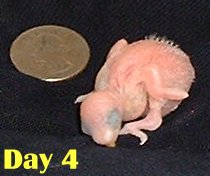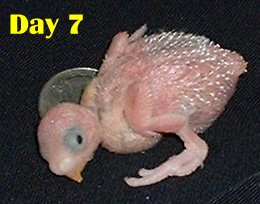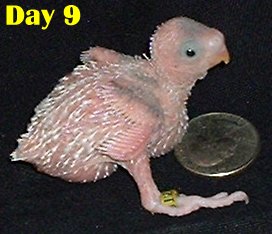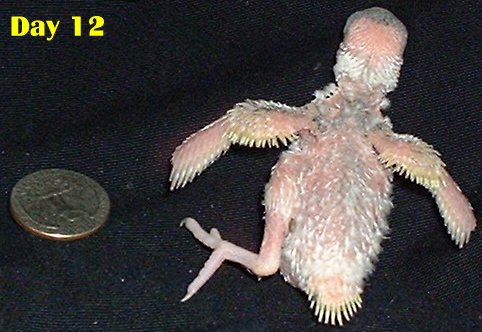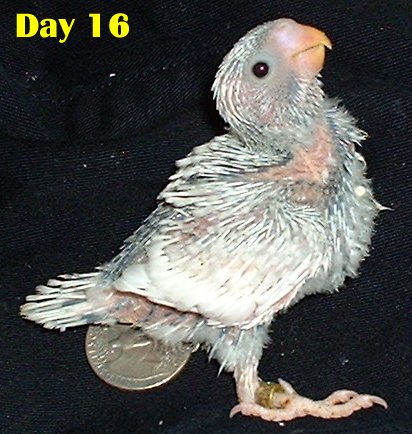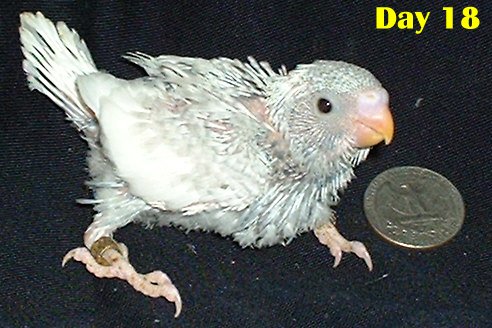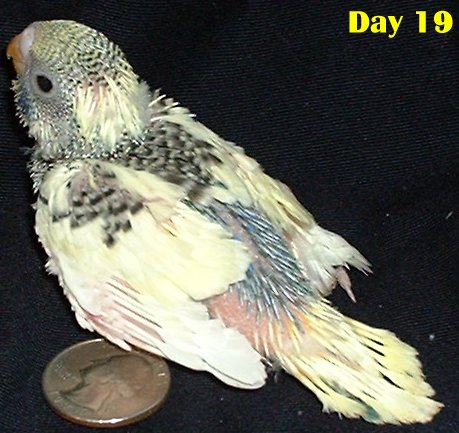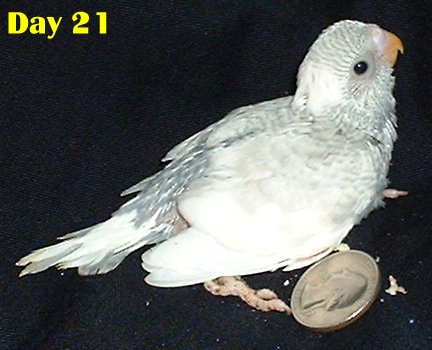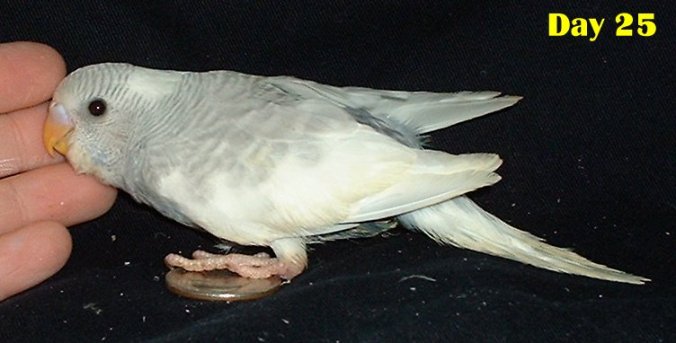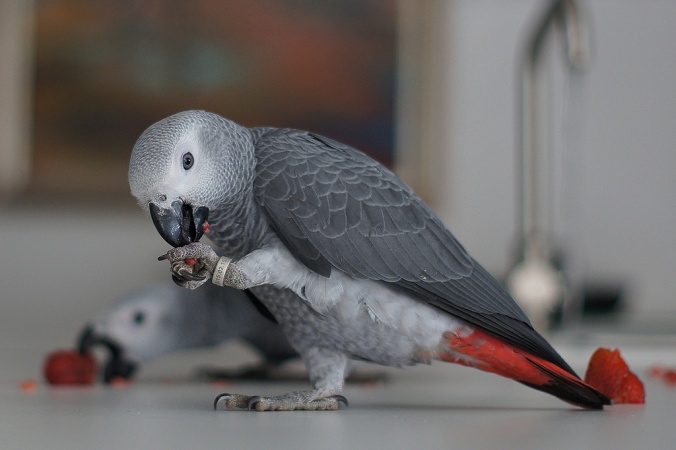Preventing and Recovering Lost Birds
“who can shed light on what happens to a cockatiel loose in minnesota”
– post on Toolady.com

Few things have ever made me feel quite so helpless as watching an escaped budgie fly off and vanish from sight. Hopefully nothing like this has happened to you and you’re reading this as a precautionary measure only. However, it’s much more likely that your bird is currently lost. Perhaps you’ve found a bird and are wondering what to do next. Whatever your reason for reading this article, I hope it helps enlighten you on how best to deal with this heartbreaking experience.
Prevention
There is one very simple way to prevent birds from escaping. Unfortunately, most people are lax about it and consequently I receive numerous questions about lost and found birds. Smaller, lightweight species can fly well with only one or two primary feathers. Add a gust of wind and you may never see your bird again. Clipping the wings regularly is very important if you want to prevent escapes. However, one clip per molt just doesn’t cut it (no pun intended). Birds do not shed all their feathers at once- they grow new ones a few at a time. This means that it takes a while for the primaries to grow back. It only takes one feather to lose your bird. Waiting until all of them have grown in before clipping can be disastrous, but few people are willing to bring their birds in to be groomed for each individual feather.
I highly recommend learning to clip your own birds. Grooming can then be done at home, per feather. If you have a good relationship with your bird this should not be a problem. Clipping is a painless procedure that takes mere seconds when done correctly. Your bird may be slightly stressed the first few times, but will not hate you for it. After a while clipping becomes routine- your bird won’t like it but will at least know what to expect. Even Fry, the conure that hated hands, did fine during clipping. He would try to run if he saw hands coming and wriggle away once I had him, but he trusted me not to hurt him and would never attempt to bite. If you have a large or squirmy bird like Fry, you can hold it while someone else does the clipping. Birds that are very tame and used to handling may not need to be restrained at all- yet another area where proper socialization helps.
Another way to prevent escapes is to limit outdoor time. Let the bird sit by the window for part of the day or build a sunroom both you and your birds can enjoy. If you must take your bird outdoors, don’t take any chances. Even if your bird can’t fly there are still dangers. What if a hawk or cat gets it? What if the bird is startled and manages to get into a tree, climbing up out of your reach? Or worse yet, manages to get into a neighbor’s yard? What if someone steals it? Murphy’s Law always applies to birds, so plan accordingly. Take you bird outside in a cage or on a harness. If brought out in a cage make sure you secure sliding doors. If you have a young bird, start training it to wear a harness while it is still open to the idea. Older birds are going to be much slower to adapt.
Here’s another tip that won’t prevent escapes, but will make your life easier if your bird does get loose: teach it to sing/whistle a tune. This works best with birds like male cockatiels, who love to whistle along. A unique tune will help you keep track of your bird should it get out of sight. Where did it go? Which tree is it in? If your bird sings you can better pinpoint its location.
Can they survive?
I’m often asked about survival odds. Some people hear about wild flocks of parrots in California and Florida and think that their birds have a pretty good chance. Unfortunately, they don’t.
True, budgies and cockatiels are very hardy. However, all our pet birds are currently bred in captivity. Australia has had laws against exporting wildlife for some time now, meaning that Aussie species are even farther removed from their wild ancestors. Captive bred birds are not very well equipped to survive in the wild. They are not used to the weather. They are not used to avoiding predators. They are not familiar with the native sources of food or where to locate them. Many cannot even fly very well so even if they wish to return they can’t (again proper socialization is important, as is proper clipping!).
The wild flocks of introduced parrots that you hear about were established back when parrots were still imported in large numbers. They were most likely wild birds, caught and imported, which then escaped or were released. Most of these parrots are also larger South American species like amazons and conures. Larger parrots would have fewer predators and be able to access better food sources. It’s not hard to see how larger, wild caught species, introduced as groups into fairly mild environments (Florida and California) could learn to adapt and survive. However, it is unrealistic to expect a single smaller bird, captive bred but native to the Australian outback, to survive a Minnesota winter. Your bird’s best chance at survival is to be found.
Finding Your Bird
There are two scenarios when a bird escapes:
- The bird remains in sight, but is somewhere inaccessible, like a tree.
- You have no idea where it is.
Scenario #1 is bad; #2 is virtually hopeless. YOU HAVE A MUCH BETTER CHANCE OF GETTING YOUR BIRD IF YOU KEEP IT IN SIGHT. Unfortunately, many birds take off flying in one direction and continue to do so until they run out of energy. Parrots are not homing pigeons and will not find their way back on their own.
Scenario #1- KEEP THE BIRD IN YOUR VIEW. If you can’t see it, keep track of it by sound. Having someone nearby really helps here, as you risk your bird flying out of sight should you choose to go indoors and get something to help you catch it. Aside from keeping track of where it is, it is also important not to startle it into flying again. If your bird doesn’t trust you much, this will be difficult. If within reach, I find that using a long perch helps. Get the bird to step up and then slowly move it to a better location. Attempting to grab an untame bird will only result in it flying further away.
Getting a bird down from a tree is tough. Even tame, loving birds will be reluctant to see what the fuss is and climb down on their own. Amazons are notorious for climbing higher into a tree, or flying to another one as soon as you are about to catch them. In a case like this a hose helps- spray ABOVE the bird so that it rains DOWN onto them. Really soak them. It will make it more difficult for them to fly. Then have someone climb the tree (if possible, ask around the neighborhood) and get the soggy psittacine. Lures can also be used to get a bird down. Leave out a cage with food in it and the door open. Bring out another bird (preferably a friend of the loose one) in a cage and place it next to the first cage. Play a tape of recorded bird noises.
Scenario #2- This is BAD. Your only hope here is to a) locate your bird or b) hope someone else does. First search the neighborhood. Call out to your bird and pray you can find it through sound. If that fails, put up signs around the neighborhood and post on social media lost/found groups. Also contact every local person who owns birds (especially if they keep them outdoors) and let them know to keep their eyes peeled. Birds are attracted to other birds, and yours may very well be attracted by the sound of theirs. I’ve inadvertently adopted several stray budgies this way.
Found a bird?
People are often devastated when they lose their pets, and it is unfair to assume ownership of a lost bird without at least attempting to find the owner. Check the local pet stores, vets, social media, and newspapers for ads about lost birds. If you can’t find the owner you can keep the bird yourself, providing you can properly take care of it, or give it to someone who can.
Case Study: Birds of a Feather…
I keep all my breeders outdoors and they do attract escaped birds. My cat is the first one to notice. He never gives my aviary birds a second glance since he knows he can’t get to them. If I see him staring at something by the aviary I know there’s a loose bird.
I’ve had three escaped budgies hanging around my aviary this year, two of which I managed to catch. The first was easy- I just walked over and grabbed him. The poor thing was starving, emaciated and trying desperately to find a way into the budgie cages. I placed him in quarantine and a day later notice that he seemed to have bulked up, an impossibility. I examined him and found that his skin was stretched taut, especially around the thighs. He had a punctured air sac and the area under his skin was filling with air. I called my vet and made an appointment, then made several pin pricks to his swollen thighs to release the air. Luckily this solved the problem. After a vet visit and 30 day quarantine, he was ready to join my flock.
The second budgie I caught was just last month (December 13th or so). She was much better off, hanging out in the neighbor’s yard up in a tree all day. It was cold out and she didn’t seem to be enjoying herself. After about a week I found her eating seed spilled from my aviaries. There’s about a one foot gap between my second aviary and the roof and I managed to scare her from on top of the cages into this space. Once in the gap she was reluctant to leave, though she’d run/fly all over the place trying to avoid my net. It took about 20 minutes and a second person, but we managed to net her. She too went through quarantine and joined my flock.
© 1997-2016 by Karen Trinkaus. May not be reprinted or used in any way without the author’s permission.


